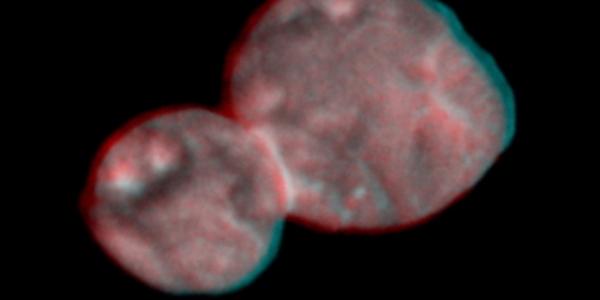Journey to Farpoint: NASA's New Horizons Mission Encounters the Kuiper Belt Object Arrokoth
Located about four billion miles from Earth and about one billion miles beyond Pluto, Arrokoth is the most distant object ever visited by a spacecraft. During its historic encounter with Arrokoth early in morning of New Year's Day 2019, NASA's New Horizons spacecraft sent back images and data from this small icy object only 22 miles long. As a "cold classical Kuiper Belt Object," it is thought to have been preserved in place since the beginning of the Solar System. The data sent back has allowed us to get some understanding of Arrokoth’s geology, composition, and its formation and origin. What has been revealed is a breakthrough in our ideas about the beginnings of planet formation.
Bill McKinnon is a professor of Earth and planetary sciences and a member of the McDonnell Center for the Space Sciences. His research focuses on the structure, origin, evolution, tectonics and bombardment histories of outer planet satellites and bodies in the Kuiper belt beyond. He is a science team member on NASA’s New Horizons mission to Pluto and the Kuiper belt, serving as a deputy lead investigator for the Geology, Geophysics & Imaging Team. He is also a science team member for the European Space Agency’s Jupiter Icy Moons Explorer and NASA’s Europa Clipper missions.
The St. Louis Astronomical Society is an organization for individuals interested in astronomy and telescopes. The public is invited to attend its meetings, telescope observing sessions, and special events. For more information about Astronomical Society events, please visit www.slasonline.org or call 314- 962-9231.
Contact SLAS for Zoom Details
